Open Journal of Energy Efficiency
Vol.2 No.1(2013), Article ID:29012,8 pages DOI:10.4236/ojee.2013.21006
Life Cycle Energy Analysis of a Multifamily Residential House: A Case Study in Indian Context
1Department of Mechanical Engineering, Motilal Nehru National Institute of Technology, Allahabad, India
2Department of Applied Mechanics, Motilal Nehru National Institute of Technology, Allahabad, India
Email: *rprakash234@gmail.com
Received January 20, 2013; revised February 19, 2013; accepted March 9, 2013
Keywords: Residential House; Life Cycle Energy; Embodied Energy; Operating Energy; PV Panels
ABSTRACT
The paper presents life cycle energy analysis of a multifamily residential house situated in Allahabad (U.P), India. The study covers energy for construction, operation, maintenance and demolition phases of the building. The selected building is a 4-storey concrete structured multifamily residential house comprising 44 apartments with usable floor area of 2960 m2. The material used for the building structure is steel reinforced concrete and envelope is made up of burnt clay brick masonry. Embodied energy of the building is calculated based on the embodied energy coefficients of building materials applicable in Indian context. Operating energy of the building is estimated using e-Quest energy simulation software. Results show that operating energy (89%) of the building is the largest contributor to life cycle energy of the building, followed by embodied energy (11%). Steel, cement and bricks are most significant materials in terms of contribution to the initial embodied energy profile. The life cycle energy intensity of the building is found to be 75 GJ/m2 and energy index 288 kWh/m2 years (primary). Use of aerated concrete blocks in the construction of walls and for covering roof has been examined as energy saving strategy and it is found that total life cycle energy demand of the building reduces by 9.7%. In addition, building integrated photo voltaic (PV) panels are found most promising for reduction (37%) in life cycle energy (primary) use of the building.
1. Introduction
A large number of buildings are built for residential, commercial and office purposes every year all over the world. Building construction sector experiences fast paced growth in developing countries, like India, due to growth economy and rapid urbanization. Worldwide buildings consume 30% - 40% amount of primary energy in their construction, operation and maintenance and held responsible for emitting 40% of global warming gases [1]. In India, 24% of primary energy and 30% of electrical energy is consumed in buildings [2]. Since, buildings are consuming large amount of energy; they need to be analyzed in the lifecycle perspective to develop strategies for reduction of their energy use and associated environmental impacts, and make them sustainable. Life cycle assessment (LCA) is the state of art tool in assessing the sustainability of buildings. In order to assess the environmental impact, it is necessary to perform an inventory analysis of building materials and the process of construction, and demolition. But, building materials production processes are much less standardized because of the unique character of each building. There is limited quantitative information about the environmental impacts of the production and manufacturing of construction materials, and the actual process of construction and demolition particularly in developing countries like India.
Life cycle energy analysis (LCEA) of buildings can also give a useful indication of environmental impacts attributable to buildings, if energy use of the building is expressed in primary energy terms. The analysis also helps in identifying the phases of largest energy consumption and to develop strategies to make buildings sustainable. Life cycle energy analysis is an approach that accounts for all energy inputs to buildings in their life cycle. It includes direct energy inputs during construction, operation and demolition of building, and indirect energy inputs through the production of components, materials used in construction (embodied energy). LCEA has been applied to examine the relationship between embodied energy in construction materials and operational energy and also to analyze the influence of building characteristics like frame work, construction, thermal insulation, heat recovery etc., on life cycle energy use of residential houses in Sweden [3,4]. Winther and Hestnes [5] compared life cycle energy use of different versions of a residential building, containing varying active and passive energy saving measures, with that of conventional building in the Norwegian context. Citherlet and Defaux [6] analyzed and compared a family house by changing its insulation thickness and type, type of energy production system and use of renewable energy in Switzerland. Mitraratne and Vale [7] recommended provision of higher insulation to a timber framed house as energy saving strategy for low energy housing in New Zealand context. Treloar et al. [8] and Fay et al. [9] analyzed the life cycle energy of Australian residential buildings built in Melbourne. Utama and Gheewala [10] analyzed clay and cement based single landed houses in Indonesia. In Indian context Shukla et al. [11] evaluated embodied energy of an adobe house. Reddy and Jagadish [12] estimated the embodied energy of residential buildings using different construction techniques and materials. Debnath et al. [13] evaluated embodied energy of the load bearing single storey and multistory concrete structured buildings. It can be observed that studies limited to embodied energy analyses of buildings are reported in open literature in Indian context. However, in order to understand the total energy needs of the building, complete life cycle energy analysis covering all phases of its life cycle is required. Only recently, the authors have reported on life cycle energy analysis of single family residential houses [14,15].
In the present work an attempt is made to present life cycle energy profile of a multifamily residential building covering the embodied, operational and demolition energy aspects in the Indian context. Some energy saving measures have also been examined from life cycle energy perspective. A typical multifamily residential house (Figure 1) called as International House (I H), located in the campus of the Motilal Nehru National Institute of Technology (MNNIT), Allahabad, India is selected for the study to gain insight into the life cycle energy use of the residential house in Indian context. The study covered energy for construction, operation, maintenance and demolition phases of the building. India is a sub tropical

Figure 1. Case study building in Allahabad, India.
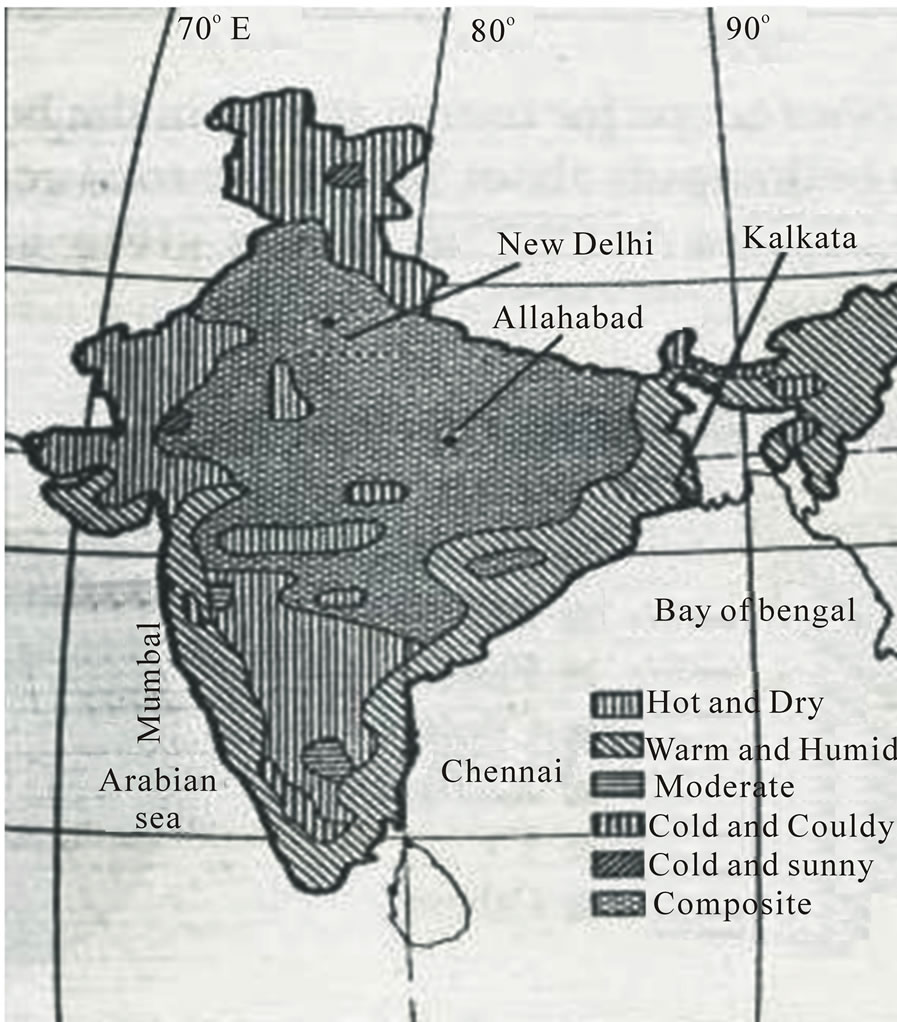
Figure 2. Climatic zones in India (Bansal, 2007).
country with 5 climatic zones viz: hot and dry, hot and humid, moderate, temperate and cold (includes cold and sunny and cold and cloudy climates) and composite (Figure 2). Allahabad falls in composite climate and is located at 25.45˚N latitude and 81.84˚E longitude. Allahabad experiences three seasons: hot dry summer, cool dry winter and warm humid monsoon. The summer season lasts from April to June with the maximum temperatures ranging from 40˚C to 45˚C.
Monsoon begins in early July and lasts till September. The winter season lasts from December to February. Temperatures rarely drop to the freezing point. Average maximum temperatures are around 22˚C and minimum around 10˚C.
2. Case Study
The selected building is a 4-storey concrete framed structured multifamily residential house comprising 44 apartments (Table 1). The material used for the building structure is reinforced cement concrete and envelope is made from brick masonry. Each flat consists of bed room, living room, kitchen and restroom in the floor area of 40 m2. The calculated U-values (includes outside air film for exterior surfaces) using e-Quest simulation software [16] for various elements of the building are listed below:
• Roof: 5.08 W/m2 K;
• Ceiling: 4.73 W/m2 K;
• Window: 10.85 W/m2 K;
• External wall: 2.15 W/m2 K;
• Ground floor: 5 W/m2 K.
The electricity from the national grid is the only oper-
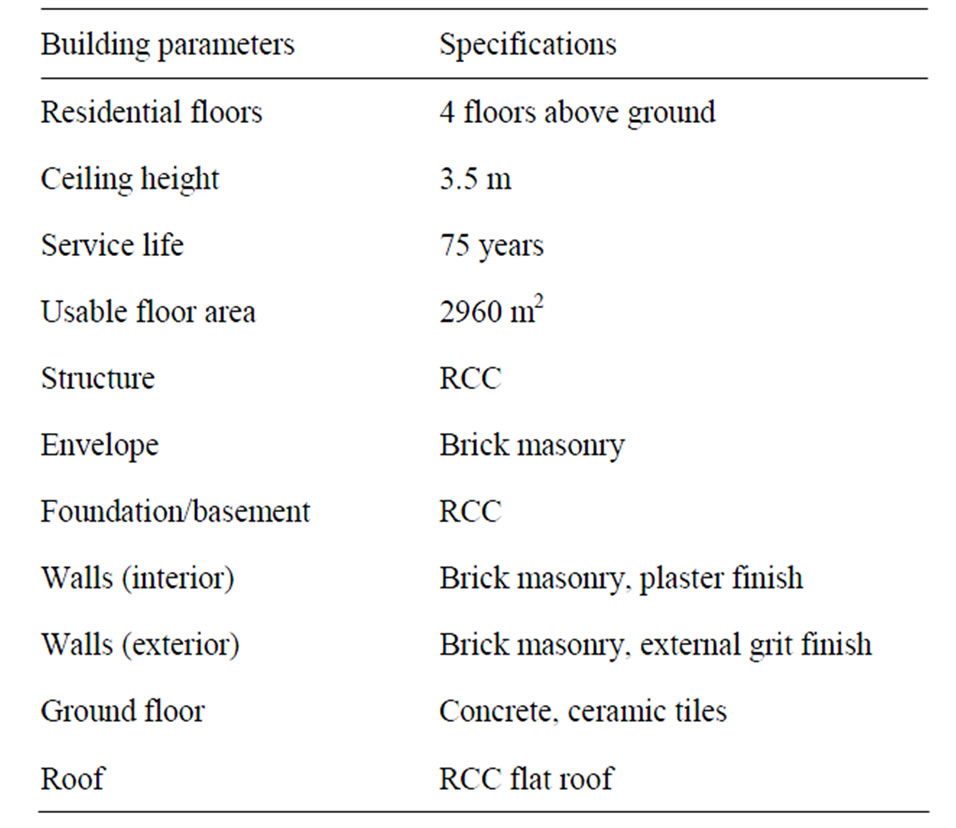
Table 1. Basic parameters of the case study of residential building.
ating energy used by the building systems. Bed room of the building is air conditioned using window air conditioner. The indoor operating set point temperature is around 25˚C and all lighting controls of the building are manual. The life cycle energy of the selected building is evaluated based on an assumed service life of 75 years.
The system studied included the manufacture of building materials, construction, operation and maintenance, and demolition phases. The transportation for each life cycle stage is also included. All the materials are manufactured in India. Embodied energy coefficients of building materials are taken from Indian literature [11-13,17, 18], and are shown in Table 2. The main information on the types and quantities of materials as well as components of the building is obtained from the detailed estimates of the building, technical specifications and other relevant documents from the building consultant.
3. Life Cycle Energy (LCE)
Life cycle energy of the building is estimated by summing up the energy incurred for construction (initial embodied), operation, maintenance (recurring embodied) and finally demolition of the building at the end of its life.
3.1. Initial Embodied Energy
Embodied energy of the building materials are obtained by summing up the product of quantity of materials multiplied by their embodied energy coefficients (Table 2). Energy for construction included energy (electricity) used for lighting, water lifting and diesel fuel used by construction equipment at the site. These are subse-

Table 2. Quantity and embodied energy of materials used.
quently aggregated with energy consumption for the transportation of building material to the construction site. The main building elements are building frames (beams, columns), slabs, floors, staircases, foundation, walls, windows, and finishes. Items such as fitments, sanitary fixtures, appliances, electrical and external items are excluded from the study due to the difficulty associated with obtaining their embodied energy data. All data relevant to construction machines and equipment used on site and transportation distances of construction materials to the construction site are obtained from the available records.
3.2. Building Operation
Operating energy of the building includes electrical energy used for cooling, heating, ventilation, lighting (6 W/m2 for 100 lux), miscellaneous equipment operation and water supply. This is calculated by simulation through e-Quest energy simulation software [16].
Figure 3 shows 3D model of the building. The building is partially occupied during day time between 9.00 am to 5.00 pm and is fully occupied during night time and fully operated during weekend i.e., Saturday, Sunday and other public holidays. Comfort indoor air temperature is set as 25˚C for cooling and 18˚C for heating. Coefficient of performance (COP) of window air conditioner is taken as 3 for cooling and 0.9 (taken as a conservative value) for electrical resistance heating. Thus, calculated annual electrical energy demand of the building for its operation (Figure 4) is then converted to primary energy using primary energy conversion factor. In
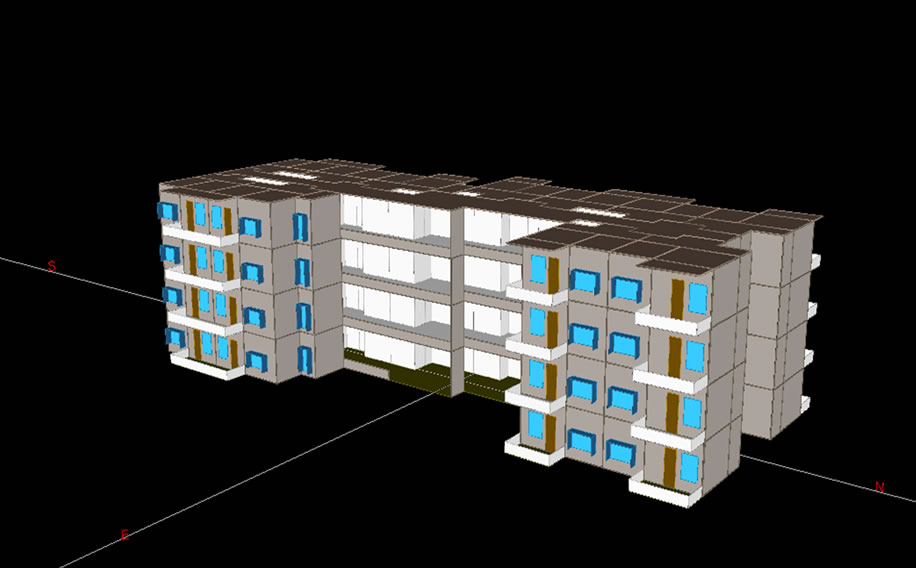
Figure 3. 3D model of the building studied.
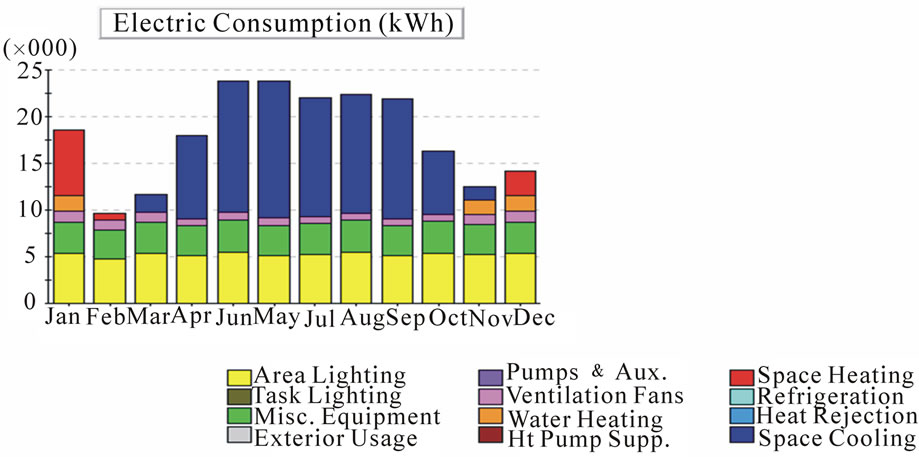
Figure 4. Summary of simulation output.
India 70% of electricity is derived from coal, oil and gas, 25% hydro and remaining from renewable energy resources [19]. A primary energy conversion factor of 3.4 [9] is adapted for electricity from national grid. Annual operating energy of the building is assumed to be constant throughout its life span. Due to changes in climatic conditions and occupants’ behavior, operating energy of the building may change little in future but, this is not taken into consideration in the analysis. To verify the results obtained by energy simulation; annual electricity meter readings (actual electrical energy consumption) are compared with the simulated values (average of 44 apartments) for some of the apartments for which meter readings are available (Figure 5). As difference between the two values is small (1% - 6%); results of the simulation can be taken as reliable.
3.3. Building Maintenance
Energy consumption estimation for the future maintenance (recurring embodied energy) is computed based on the estimated life span of the building materials and components (Table 3) following same procedure as explained in evaluation of initial embodied energy of the building.
3.4. Building Demolition
The last phase of a building’s life is demolition. The conventional demolition process often results in landfilldis-

Figure 5. Comparisons of simulated and actual electricity readings.

Table 3. Life span of building components.
posal of majority of the materials. Energy consumption at this phase is mainly due to the operation of demolition machinery and transportation of waste materials to landfill site. Due to lack of data on the energy requirement of actual demolition process in India, it is assumed that 51.5 MJ/m2 of energy as diesel fuel is required to demolish the building [20]. The major waste materials generated are masonry, concrete and mortar. Volume of materials generated during building demolition for m3/m2 [21] floor area is: Masonry: 0.3825 m3/m2, Concrete and mortar: 0.5253 m3/m2. Volume of waste materials generated is converted to mass in ton by material density (Masonry: 1600 kg/m3, Concrete and mortar 1920 kg/m3). To estimate the energy required for transportation of waste material, it is considered that waste material is transported from the site via a diesel powered dump truck. Truck requires 2.85 MJ energy per ton of material for one km travel [21]. The transportation distance for this study is assumed to be the distance from the MNNIT campus where the building under study is located to the landfill site at the city outskirts at about 15 km. Finally, the energy requirements for demolition equipment and transportation of demolition waste to landfill site are summed up to yield the total energy requirement for the demolition phase.
3.5. Life Cycle Energy
The building’s life cycle energy (LCE) is calculated using following relations [4,10]:
LCE = EBEi + EBEr + (OPE × building lifetime) + DE (3.1)
where EBEi = Initial Embodied Energy;
EBEr = Recurring Embodied Energy;
OPE = Operating Energy per year;
DE = Demolition Energy.
4. Results and Discussion
The results of the life cycle energy analysis are presented in this section. The initial embodied energy of the building is calculated to be 7.35 GJ/m2. Also, a comparison of the embodied energy and operating energy of the building over its life span indicated that embodied energy is about 11% of the operating energy. This is considerable and is equivalent to about 9 years of the building’s operating energy requirement. Further analysis of the initial embodied energy profile reveals that steel, cement, and bricks are the most dominant materials (Figure 6).
Steel accounted for 34% of the initial embodied energy. This was followed by cement (25%) and brick (24%). A summary of the quantities of the main materials used for constructing the building (Figure 7) showed that bricks accounted for about 38% of the materials by weight, followed closely by aggregate with 29%. Though steel contributed 2.4% and cement 7.6% by weight, due to their large embodied energy coefficients, as given in Table 2, its contribution to initial embodied energy is large. Operating energy of the building is evaluated as 66.86 GJ/m2 over its life span. The LCE attributable to the studied building based on 2960 m2 gross floor area for 75 years is 75.07 GJ/m2 (Table 4). The analysis of the LCE profile of the building revealed that the operation phase dominated other life cycle phases. It accounts for 89% of the LCE consumption. The LCE share of energy consumption of the manufacturing phase is also not negligible (≈11%). All other phases do not contribute significantly to the building LCE profile.
Further, activity wise energy split (Figure 8) for operating phase reveals that energy for space cooling is the largest contributor (45%) to operating energy followed by area lighting with 29%. Due to climatic conditions of the place, cooling energy part is much more than heating energy. Electricity derived mostly from fossil fuels is used for running space cooling equipment (window air conditioners) and due to which operating energy (primary) of the building is quite high. As operating phase
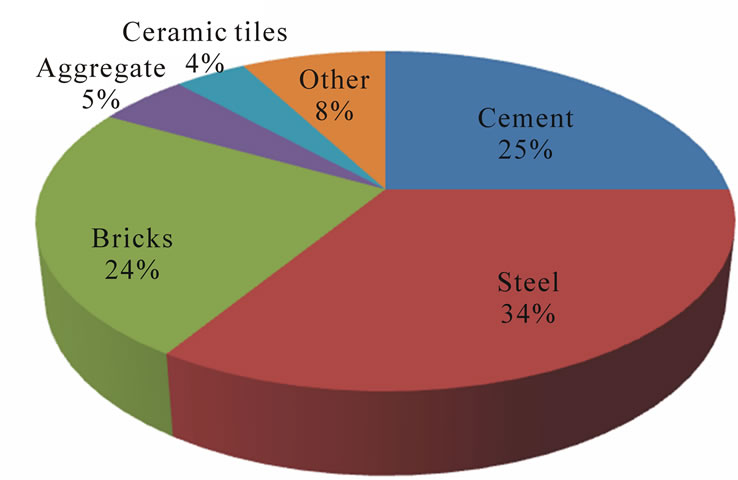
Figure 6. Material percentage share of initial embodied energy.
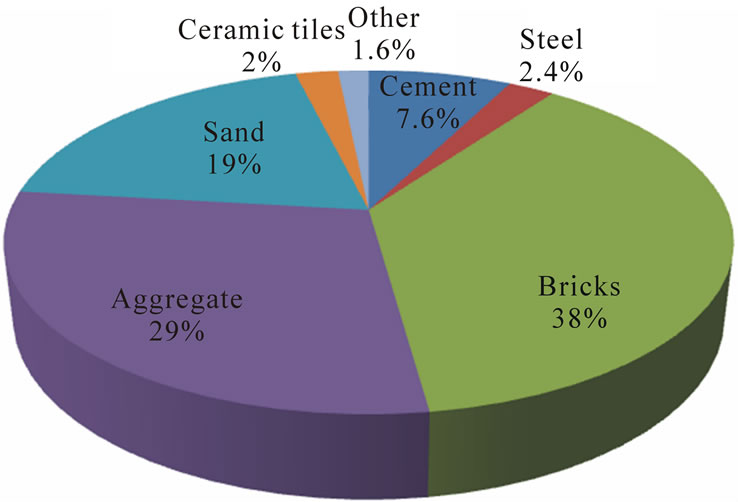
Figure 7. Percentage share of materials (by weight) used in the construction.
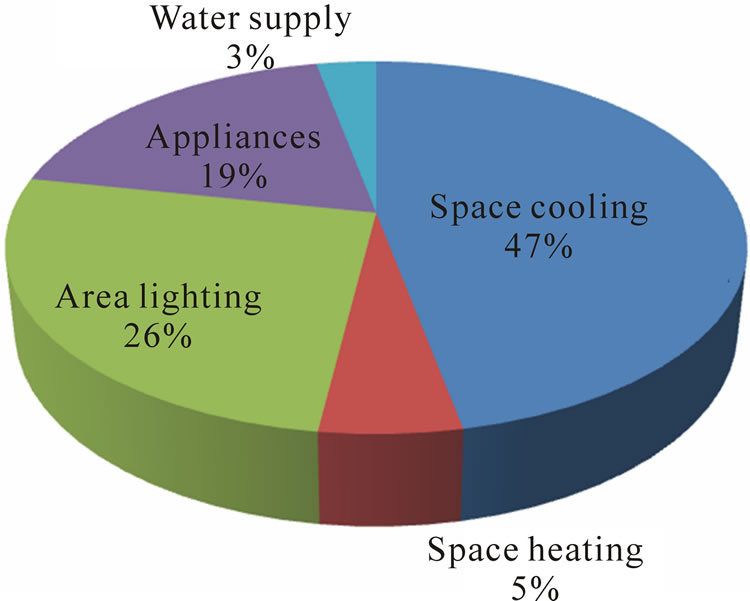
Figure 8. Operating energy distribution by activity.
(89%) is the largest contributor to life cycle energy of the building, strategies aiming at reducing it would result in significant energy savings and will make building sustainable. Hence, energy for space cooling needs to be targeted first to achieve reduction in operating energy of the building.
As energy for space cooling is directly proportional to the cooling load of the space, attention must be focused on reducing it by changing the building design and/or construction materials. Table 5 shows that building walls (27%) and roof (23%) contribute large to cooling load of the building. Hence, thermal conductance of walls and roof need to be reduced by applying some insulation to them and/or using materials having low thermal conduc-

Table 4. Life cycle energy of the studied building (Usable floor area ≈ 2960 m2).

Table 5. Thermal loads on the building in GJ per year.
tivity at parity of other properties, in their construction. Also, as India is a tropical country with large potential for solar energy; part or total of electrical energy demand of the building can be met from renewable sources like photovoltaic cells, wind mills etc.
4.1. Energy Saving Measures
To explore the potential for reduction in the life cycle energy consumption, the selected building is studied with two modifications: Case A: Burnt clay bricks of the wall replaced with aerated concrete (A.C) blocks and roof covered with 25 mm A.C tiles; Case B: Photovoltaic
(PV) panels integrated to case A to meet part of electrical energy demand of the building during its operation phase. Case A: Thermal conductivity, density and embodied energy of A.C blocks are lower than burnt clay bricks (Table 6). Compressive strength of the A.C blocks is also comparable with bricks; hence, they are considered as suitable materials to replace burnt clay bricks so as to reduce embodied energy and cooling load of the building. Case B: Photo voltaic units (44), each unit consisting of 16 modules are integrated with building to meet part of the electrical energy demand of the building. Table 7 shows specifications of PV modules used in the building. Sizing of the photo voltaic panels is done as explained in

Table 6. Thermo physical properties of wall materials.
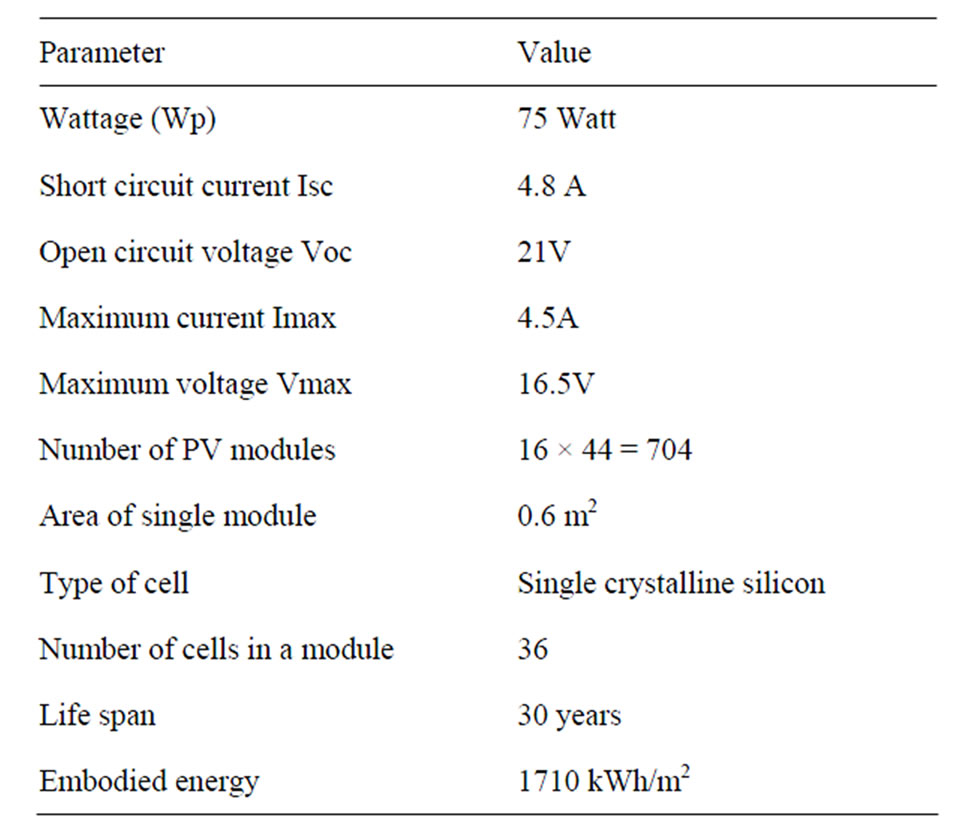
Table 7. PV Module specifications.
reference [22]. Table 8 shows that building life cycle energy demand decreases 9.7% when burnt clay bricks are replaced with A.C blocks and roof is covered with A.C tiles (case A). Embodied energy of the building increases 20% with integration of PV panels to the building (case B) due to high energy intensity of materials used in PV cells of the panels. But, there is 37% decrease in the overall life cycle energy (primary) of the building as PV panels develop 75 MWh electricity per annum which is used to meet part of the electrical energy demand of building during its operation phase.
4.2. Sensitivity Analysis
Life cycle energy of the building is also evaluated for different life spans of the building to assess its impact on LCE demand of the building. LCE demand of the building is decreasing with increase in life span of the building (Figure 9). Actually, embodied energy of the building which decreases with increase in life span of the building, causes LCE of the building to come down.
However, decrease in embodied energy of the building slows down over the life span of 50 years and so is the LCE of the building. Generally, buildings in India are designed for 60 to 100 years. Hence, the results presented herein, holds good for range of life span of buildings from 50 to 100 years (Table 9).
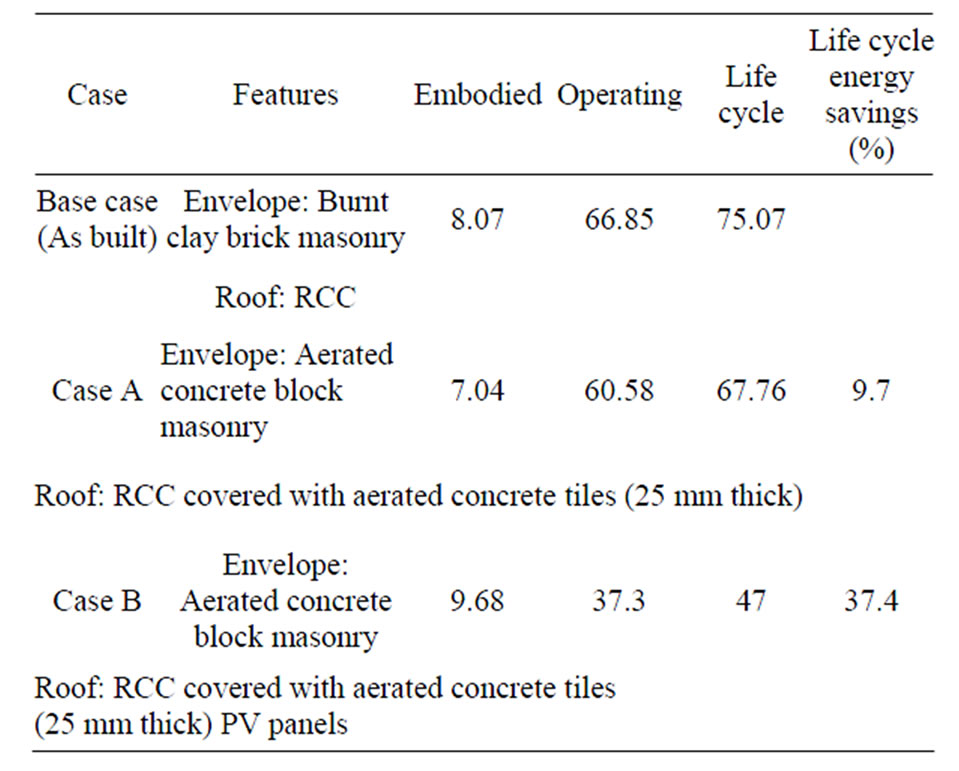
Table 8. Life cycle energy comparison (GJ/m2).
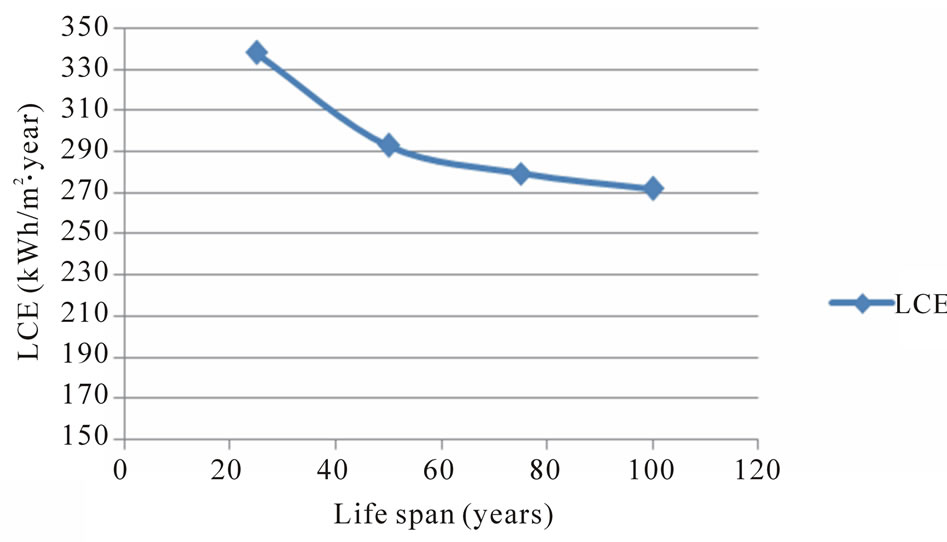
Figure 9. Variation of LCE of the building with change in life span.
5. Conclusion
The paper presents the life cycle energy analysis of a multifamily residential house in Allahabad, India. It shows that while the operating phase of building is very significant (89%), the manufacturing phase is also not negligible (11%). Energy for on-site construction and demolition of the building is minute (<1%) and can be ignored in evaluation of LCE of the building. Steel, cement, and bricks are most significant materials in terms of contribution to the initial embodied energy profile of the building. The life cycle energy intensity of the building is found to be 75 GJ/m2 and energy index as 279 kWh/m2 per year. Multy storey houses can be preferred over single storey houses as LCE of single storey houses (300 - 330 kWh/m2 year) [15] is higher than multy storey houses (270 - 280 kWh/m2 year). Electricity consumption during operation phase of the building is to be reduced to lower its life cycle energy demand and make it sustainable. Use of aerated concrete blocks in the construction of walls and for covering roof reduces building’s life cycle energy demand by 9.7%. Building integrated photo voltaic panels are found most promising for reduction in life cycle energy use of the building as it decreases 37% when part of electrical energy demand (75 MWh per annum) of the building is met through PV panels. Though embodied energy of the buildings accounts only 11% of the LCE of the building, opportunity for its reduction through low embodied energy materials should also be considered.
REFERENCES
- M. Asif, T. Muneer and R. Kelley, “Life Cycle Assessment: A Case Study of a Dwelling Home in Scotland,” Building and Environment, Vol. 42, No. 3, 2007, pp. 1391-1394. doi:10.1016/j.buildenv.2005.11.023
- N. K. Bansal, “Energy Security, Climate Change and Sustainable Development,” In J. Mathur, H. J. Wagner and N. K. Bansal Ed., Science, Technology and Society: Energy Security for India. Anamaya Publishers, Inc., New Delhi, 2007, pp. 15-23.
- K. Adalberth, “Energy Use during the Life Cycle of Single-Unit Dwellings: Examples,” Building and Environment, Vol. 32, No. 4, 1997, pp. 321-329. doi:10.1016/S0360-1323(96)00069-8
- K. Adalberth, “Energy Use in Four Multi-Family Houses During Their Life Cycle,” International Journal of Low Energy and Sustainable Buildings, Vol. 1, 1999, pp. 1-20.
- B. N. Winther and A. G. Hestnes, “Solar Versus Green: The Analysis of a Norwegian Row House,” Solar Energy, Vol. 66, No. 6, 1999, pp. 387-393. doi:10.1016/S0038-092X(99)00037-7
- S. Citherlet and T. Defaux, “Energy and Environmental Comparison of Three Variants of a Family House during Its Whole Life Span,” Building and Environment, Vol. 42, No. 2, 2007, pp. 591-598. doi:10.1016/j.buildenv.2005.09.025
- N. Mithraratne and B. Vale, “Life Cycle Analysis Model for New Zealand Houses,” Building and Environment, Vol. 39, No. 4, 2004, pp. 483-492. doi:10.1016/j.buildenv.2003.09.008
- G. Treloar, R. Fay, P. E. D. Love and U. Iyer-Raniga, “Analysing the Life—Cycle Energy of an Australian Residential Building and its Householders,” Building Research & Information, Vol. 28, No. 3, 2000, pp. 184-195. doi:10.1080/096132100368957
- R. Fay, G. Treloar and U. Iyer-Raniga, “Life-Cycle Energy Analysis of Buildings: A Case Study,” Building Research & Information, Vol. 28, No. 1, 2000, pp. 31-41. doi:10.1080/096132100369073
- A. Utama and S. H. Gheewala, “Life Cycle Energy of Single Landed Houses in Indonesia,” Energy and Buildings, Vol. 40, No. 10, 2008, pp. 1911-1916. doi:10.1016/j.enbuild.2008.04.017
- A. Shukla, G. N. Tiwari and M. S. Sodha, “Embodied Energy Analysis of Adobe House,” Renewable Energy, Vol. 34, No. 3, 2009, pp. 755-761. doi:10.1016/j.renene.2008.04.002
- B. V. V. Reddy and K. S. Jagadish, “Embodied Energy of Common and Alternative Building Materials and Technologies,” Energy and Buildings, Vol. 35, No. 2, 2003, pp. 129-137. doi:10.1016/S0378-7788(01)00141-4
- A. Debnath, S. V. Singh and Y. P. Singh, “Comparative Assessment of Energy Requirements for Different Types of Residential Buildings in India,” Energy and Buildings, Vol. 23, No. 2, 1995, pp. 141-146. doi:10.1016/0378-7788(95)00939-6
- T. Ramesh, R. Prakash and K. K. Shukla, “Life Cycle Energy Analysis of a Single Family Residential House with Different Envelopes and Climates in Indian Context,” Applied Energy, Vol. 89, No. 1, 2012, pp. 193-202. doi:10.1016/j.apenergy.2011.05.054
- T. Ramesh, R. Prakash and K. K. Shukla, “Life Cycle Approach in Evaluating Energy Performance of Residential Buildings in Indian Context,” Energy and Buildings, Vol. 54, 2012, pp. 259-265. doi:10.1016/j.enbuild.2012.07.016
- e-Quest, “The Quick Energy Simulation Tool,” 2009.
- Development Alternatives (DA), “Energy Directory of Building Materials,” Building Materials & Technology Promotion Council, New Delhi, 1995.
- T. N. Gupta, “Building Materials in India,” Building Materials & Technology Promotion Council, WordSmithy, New Delhi, 1998.
- Ministry of Power, Government of India, “Power Sector at a Glance All India,” 2012. http://www.powermin.nic.in/JSP_SERVLETS/internal.jsp
- B. Thomas, A. Jonsson and A. M. Tillman, “LCA of Building Frame Structures,” Technical Environment Planning Report, Goteborg, 1996.
- The Energy and Resources Institute (TERI), “Sustainable Building Design Manual,” Vol. 2, New Delhi, 2004.
- C. Arvind, G. N. Tiwari and A. Chandra, “Simplified Method of Sizing and Life Cycle Cost Assessment of Building Integrated Photovoltaic System,” Energy and Buildings, Vol. 41, No. 11, 2009, pp. 1172-1180. doi:10.1016/j.enbuild.2009.06.004
NOTES
*Corresponding author.

